Every time I visit a new country, I bring with me a list of people I want to buy something special for. Bringing something home from my travels always brings a smile to someone’s face. That is the best part about coming home. It feels like a chance to share something from that country’s culture with them or perhaps there is a special travel story attached, which is fun to re-tell. And let’s be honest, I buy a lot for myself as well.
I’ve you’ve ever been to my house, it feels like a little museum. Tchotchkes dot every shelf and bookcase in my home. They are one way I decorate my house in travel memories. Every time I travelled to Japan, I had a hard time packing at the end of the trip, just from the sheer amount of souvenirs I wanted to bring home. Everything is so cute, so cheap and so precious! I wanted to share with you the best things to buy both for yourself and your loved ones on your next trip to Japan and where to find them!
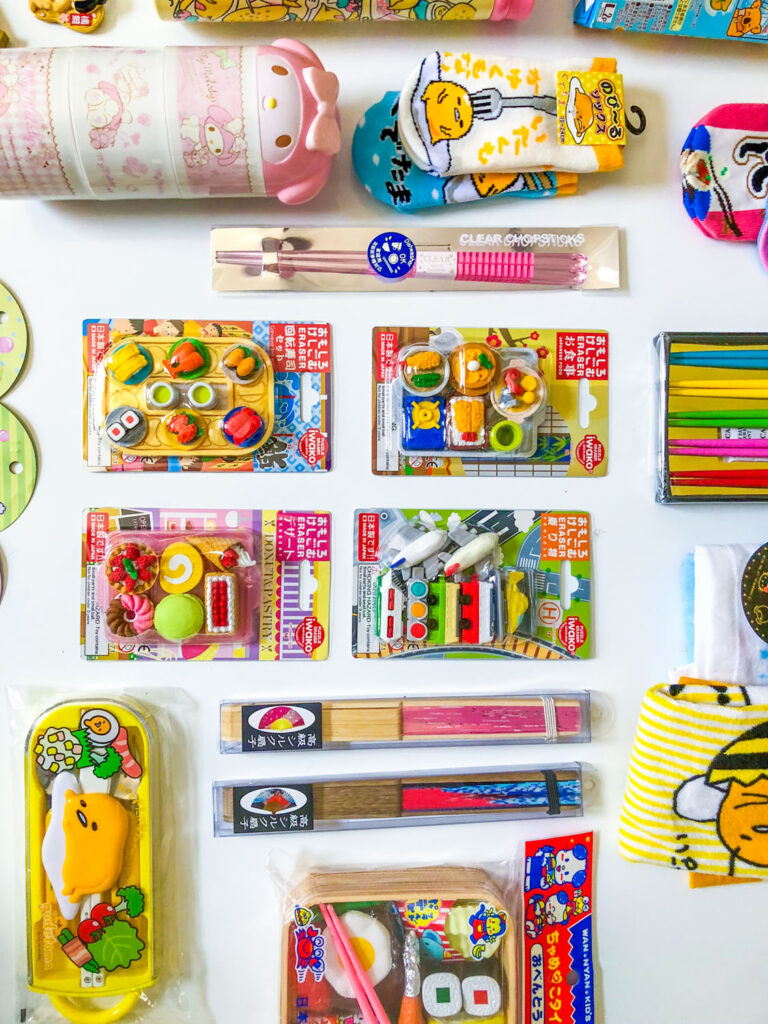
Goshuincho
My favourite souvenir, which I can never recommend more, is a goshuincho. Goshuincho translates into an “honourable stamp or seal book.” People who visit temples and shrines use these books to collect the calligraphic stamps, which are hand-drawn by the priests in the temple. The stamps are used to prove your pilgrimage to these places. But as a tourist, they are pieces of art to collect from all your travels. If you plan to return to Japan, they are a great way to preserve the memories throughout the years.
I love filling mine up and hope to get it so full one day I need to buy another. The books themselves can be purchased at any temple for around ¥1,500 and come in a variety of beautiful designs. The stamps cost around ¥300-¥500 and the money acts as a donation made towards the temple.

Harajuku Fashion
Harajuku, perhaps because of its prevalence in the pop song “Harajuku Girls” by Gwen Stefani, is a word everyone seems to know. But going to the real place and seeing what Harajuku is really all about is so much more than just a word in a song. Harajuku fashion is a movement against strict societal rules and the pressure to fit the norm, especially in Japan.
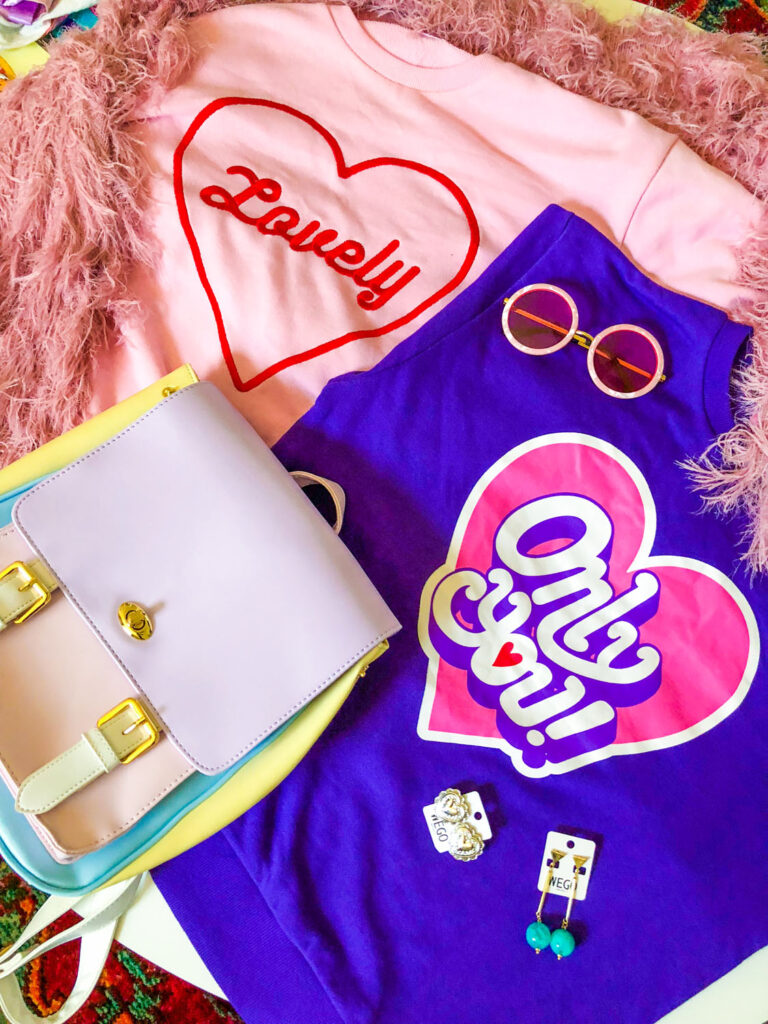
Harajuku fashion is often associated with bright colours, nostalgic references and a childlike flare. Bringing home some of these bright and pastel pieces of clothing either for yourself or your friends is something which will surely be a big hit! My favourite store to find well-priced Harajuku fashion is W♥C. There are several W♥C stores along Takeshita-Dori in Harajuku which are the originals and where you’ll find the best and more “harajuku” selection.
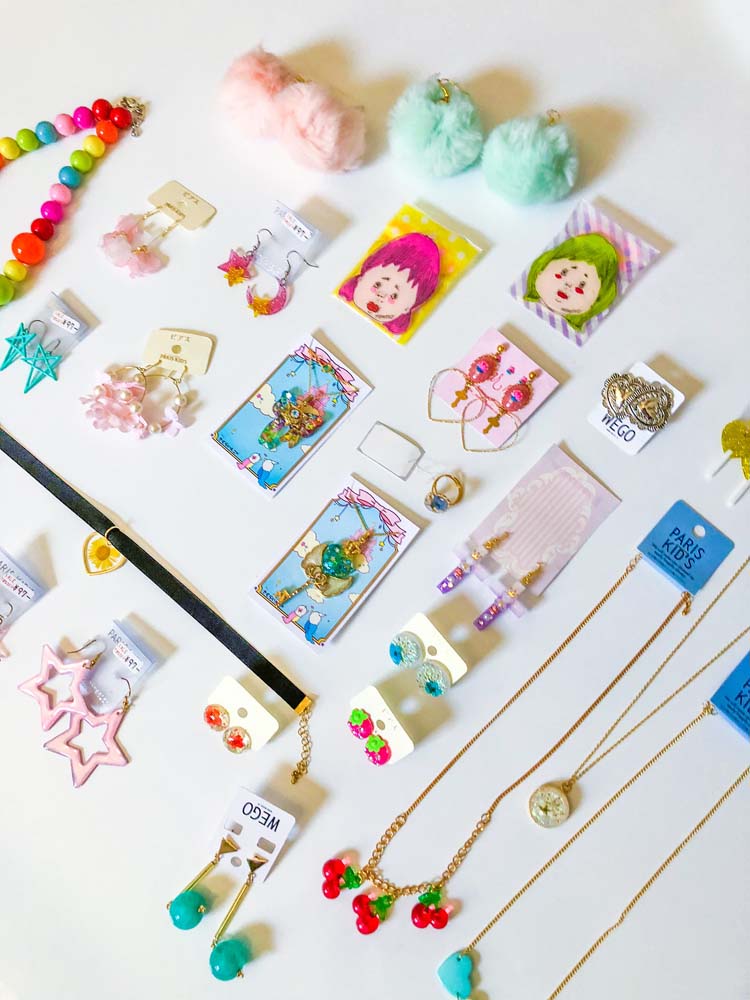
Cosmetics
Japanese cosmetics are one of the top-rated items that travellers tend to search out and bring home when coming to Japan. Not only are they super affordable (especially if you get that Tax-Free refund, more about that at the bottom of this post), but they are also of the highest quality. And to top it all off, they look SUPER CUTE. Cute is called ‘kawaii‘ in Japanese and cosmetics here are definitely kawaii. Every drugstore will carry a wide range of popular brands like CANMAKE and CEZANNE, but my favourite store to buy cosmetics is ITS DEMO. ITS DEMO features Disney and Anime themed beauty products whose packaging will make it so even after being empty for years you’ll still keep them around – or at least I do!
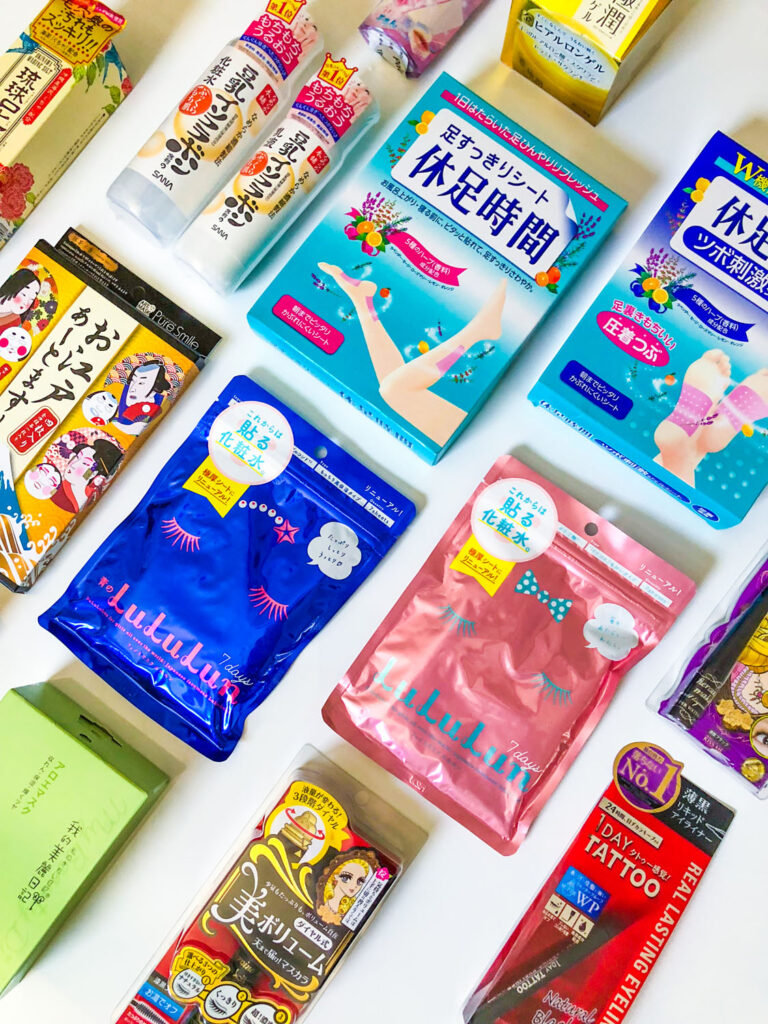
Beauty Products
If you’ve been into skincare and beauty over the last five years, you’ve seen the huge trend in face masks which exploded all over the North American marketplace. Well, it all started in Korea and Japan. So while visiting the home of this trend, you need to stockpile them. There are entire rows of face masks in some shops which seem to go on forever! You’ll find extremely unique varieties, which, even if you can’t read the labels, are always worth trying!
Another Japanese beauty product I can’t live without is the aching muscle pads that come in a variety of scents. These draw out the heat from sore muscles and relax your body. They work so well, and I always pick up a huge package when I’m in Japan as they are more than four times the price in Canada (when you can even find them!) One of the best places to buy these, which has unbeatable prices, is Don Quijote. Don Quijote is the biggest discount store in Japan, and there are locations all over the country.

Folding Fans
A folding fan is one of the more iconic images of Japanese culture. Fans in Japan were used for more than just cooling down. They were used in dance, to show off wealth, or even just to accessorize an outfit. The first historical record of a folding fan is as a gift from the Japanese to the emperor of China in 988. The neighbourhood of Nihonbashi, in Tokyo, is known for its craftsmen and is a great place to search out handmade fans.
If you’re looking for something less artisan, I think there is nothing wrong with the mass-produced fans you’ll find in any local marketplace. You can even find these fans in stores like Daiso for a fraction of the cost of fancy handpainted ones. Folding fans are such a great thing to buy for children, and they are great for dress up and for display. Plus if you buy the dollar store once you don’t need to worry too much about them breaking it.
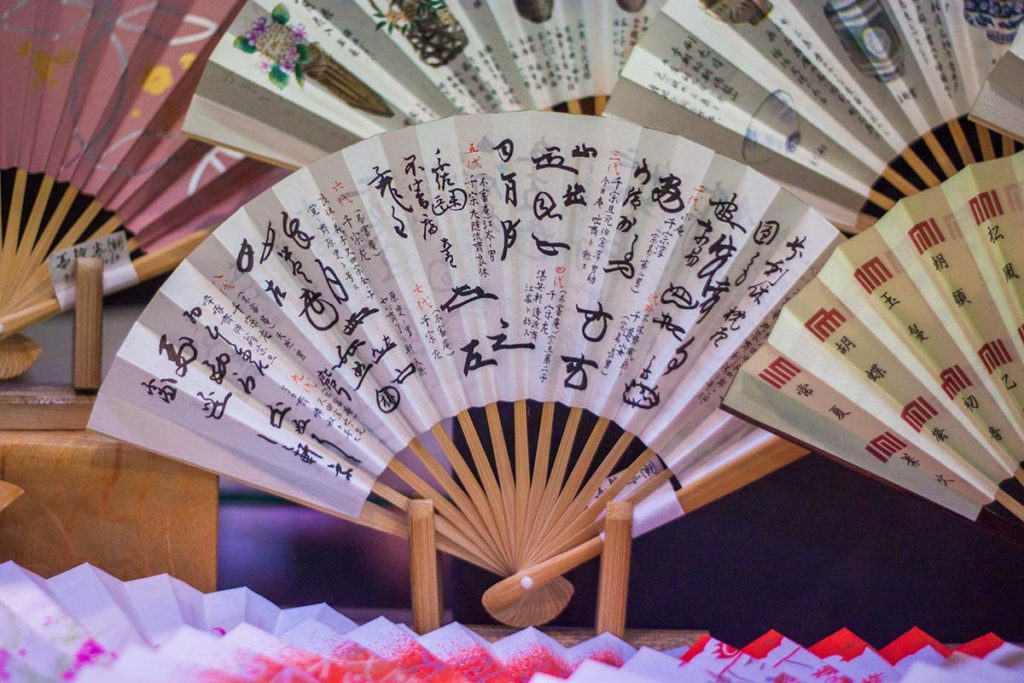
Omiyage
Omiyage is a popular form of gift-giving in Japan. It’s a tradition that when you return from a trip or vacation you bring home omiyage to your friends, coworkers, and family. This omiyage is most often a sweet treat. Omiyage desserts are often packaged individually, inside a large box that is beautifully wrapped. Different regions of Japan have various specialties of omiyage. For instance, in Tokyo, one of the most popular omiyage items is called the Tokyo Banana. The Tokyo Banana is a tiny, banana-shaped cake filled with custard and is as soft as a pillow!
In Kyoto, you’ll find yatsuhashi, a traditional triangular-shaped sweet which is filled with red bean paste. If you aren’t fussy about which omiyage you get, these can often be bought from at the airport or train station just before departing the country. Since omiyage are fresh, they are best eaten within a week or so after purchasing. We made the mistake is not paying attention to the expiration date when we bought our Tokyo Bananas and realized the day before they expired. So we ate them all ourselves in our hotel room – while still delicious, our poor friends never got their gift 🙁
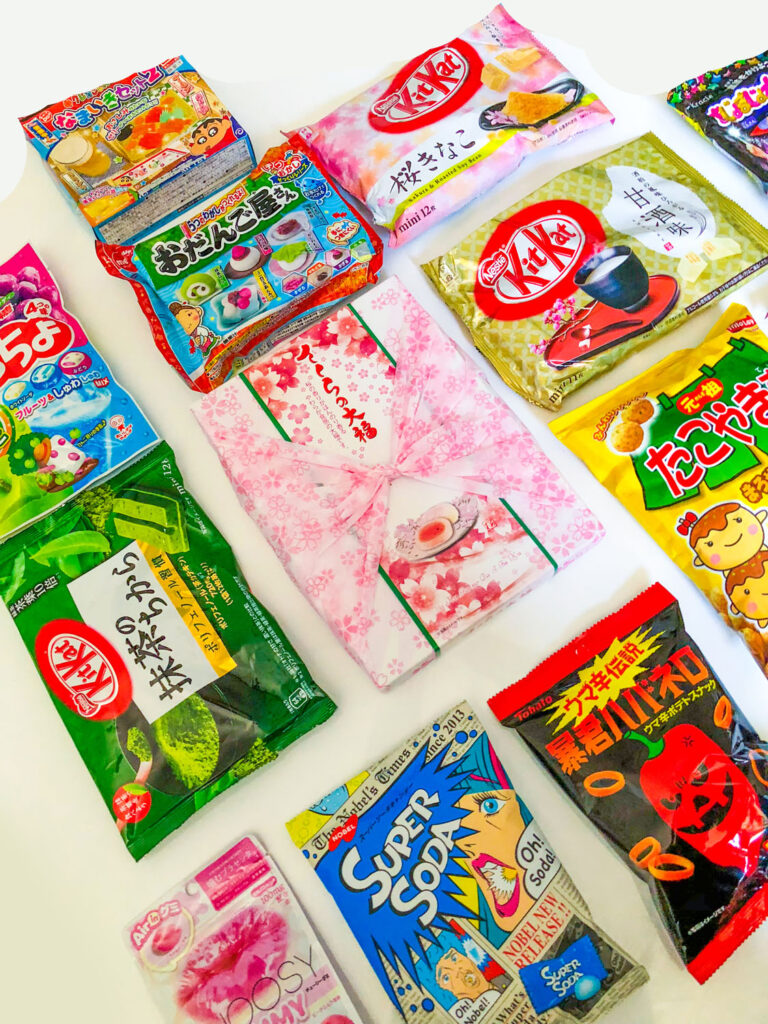
Jewellery and Hair Accessories
Japan LOVES accessories. Anything and everything you could think of to decorate your outfit can be found in shopping malls and along street shops in Japan. Paris Kids is a name brand shop that specializes in accessories and often has the best trends of the year at bargain prices. Don’t let the name fool you, it’s for everyone. WEGO is another great place where you can find adorable jewellery. But if you’re looking for something a little more high-end and handmade, you can always check out neighbourhoods like Shimokitazawa, whose hipster shops always have a selection of wonderfully unique handmade jewellery.
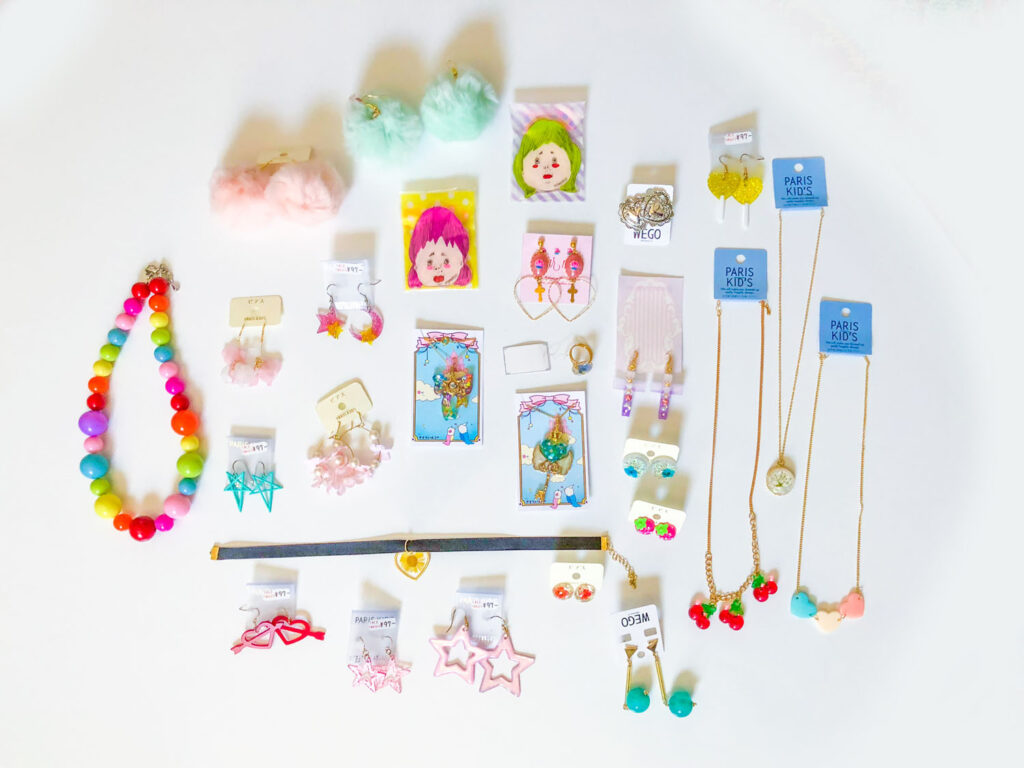
Ceramics
Japanese ceramics are one of the oldest forms of handicrafts in the country. While bespoke stores sell only the very best ceramics and pottery from local artisans, most marketplaces around the country will usually feature a stall or two which sell beautiful Japanese ceramics at a fraction of the cost. One of my favourite places to explore to find these types of products is the Tsukiji outer market. While the Tsukiji Fish market may have moved to a new location outside of Tsukiji, the outer market with all its food stalls and merchandise is still going strong. If you’re looking for more artisan quality products but at a lower price point, check out any local antique store or flea market, like the one which occurs once a month in Yoyogi Park. These antique markets often sell true works of art at a previously-used price point.
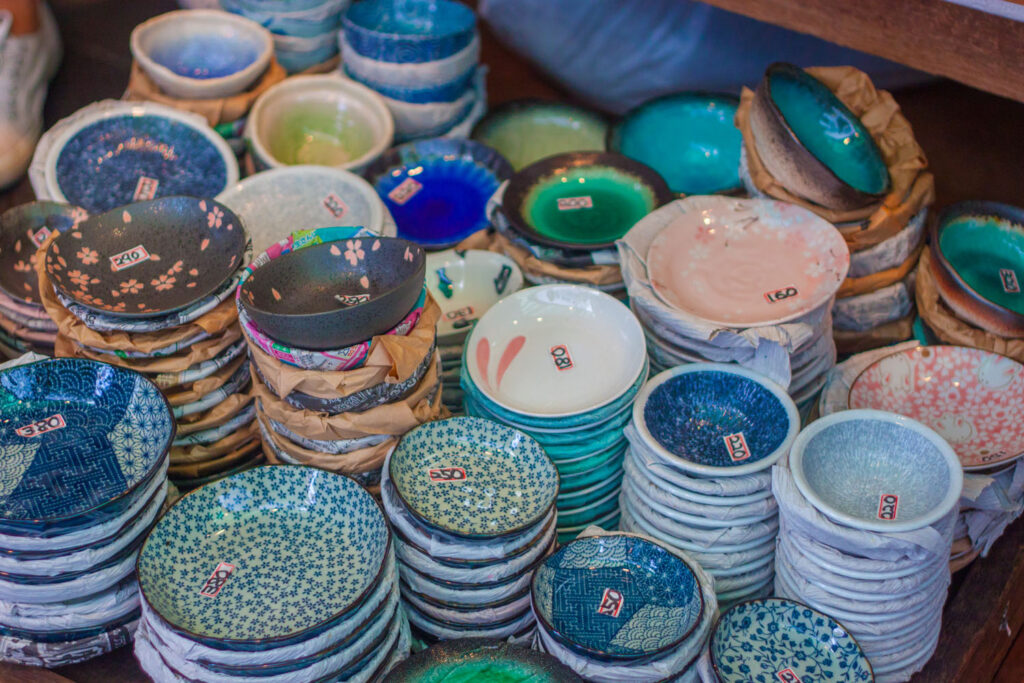
Yukatas
A yukata is the more casual, summery version of a kimono. Unlike a kimono, which is made of pure silk, yukatas are made of cotton or synthetic fabric, and unlined. This not only makes them lighter, but it also makes them much less expensive. Even Japanese people will only wear their kimonos on special occasions. Otherwise, they will relax at home in a yukata. A full yukata set comes with; the robe, an obi (belt), some yukata strings and even perhaps a special pair of shoes called “geta.” Geta shoes are sandals made from wood and often slightly raised off the ground as per tradition.
While you can buy these sets new around touristy areas, I think the best way to buy these is at a vintage shop. There are hundreds of vintage shops in Japan, as they are one of the top countries supporting sustainability. Vintage shops in Japan are impeccably organized, and the clothes almost always look brand new. You can find complete yukata sets for a fraction of the cost, and they feel almost more special since there is an imagined history to go along with them. My favourite vintage store is HARAJUKU CHICAGO. Their selection of used yukatas and kimonos is huge so whatever your style you’ll find the perfect one!
Train Merchandise
The major way in which people get around in Japan is by rail. Japan is home to 46 of the world’s 50 busiest stations. As such, it is a huge draw for trainspotters and train collectors. Trains are almost celebrity characters with their own merchandise. You can find toy replicas of real trains, train plushies, train home goods, train totes, train costumes, train stationery and more! Inside any train station, you’ll usually find an entire store dedicated to the local train or train station. Even if you’re not obsessed with trains, these adorable items are a great thing to bring home to remember the places you’ve been. Plus kids love them so if you have little ones at home this is a great option for them!

Flavoured KitKats
KitKats, while available all over the world, is chocolate of another nature in Japan. Instead of just plain milk chocolate, the KitKats here come in dozens and dozens of different flavours. Eating a plain KitKat is unheard of. You can find flavours like Sake, Matcha, Strawberry, Red Bean, Creme Brulee, Apple, Banana, Pumpkins and hundreds more! While you can usually find discounted packages of these at Don Quijote, the best place to find the most unique and collectable flavours is at the KitKat Chocolatory stores around Japan. These carry the largest selection as well as some seasonal and exclusive flavours.

Stationary and Stickers
I’ve never found more amazing stationary in any other country I’ve visited. Japan is the king of stationary! Everything here, no matter the price point, is given an artistic treatment. Even the simplest notebook or day-planner is turned into a work of art. There are thousands of stationery stores in Japan where you can find unique versions of anything you can imagine to suit your personality or tastes. But they don’t just stop with notebooks. The selection of stickers, washi tapes, pens, markers and more is unparalleled! And it’s all incredibly cheap! Making it pretty much impossible not to buy it all.
While most shopping centres will have a variety of stationery stores, two of my favourite stores to find the best deals are Tokyu Hands and Daiso. Tokyu Hands is a DIY-department store but with an entire floor dedicated to stationary. Daiso is a Japanese 100 Yen Store, the equivalent of a dollar store in North America. But the quality of the products at dollar stores here in Japan is far superior to those in North America. I was blown away by just what I could find.
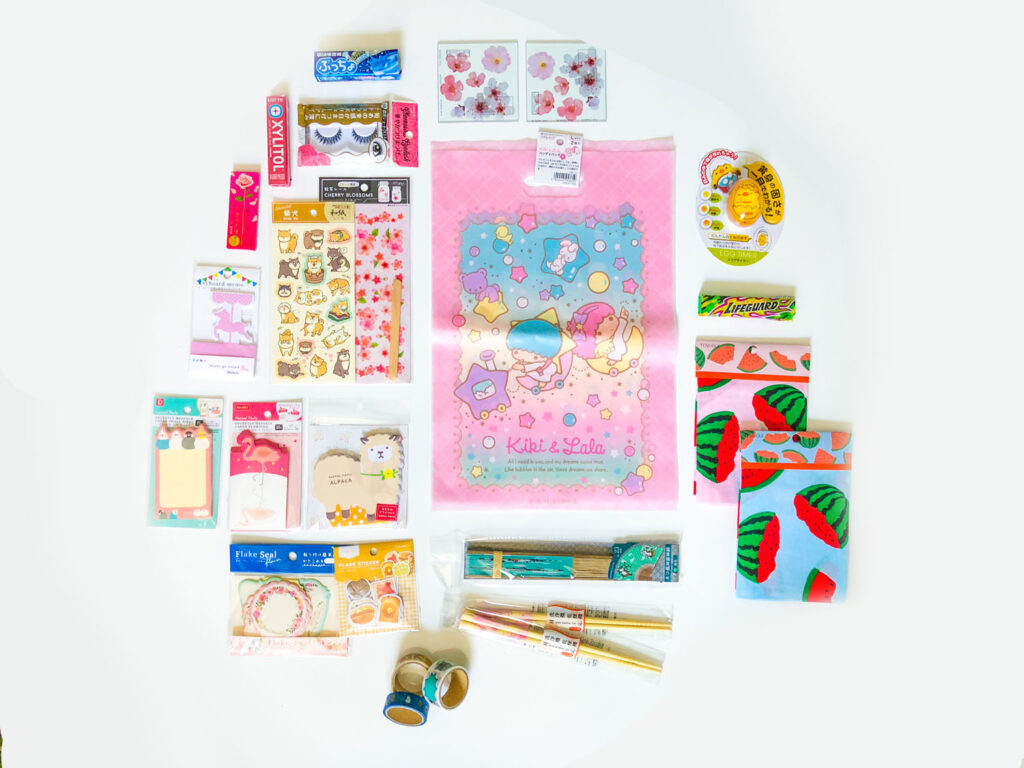
Crane Game Stuffed Animals
While these adorable stuffed animals might not be the most unique thing in the world, winning them at arcades around Japan means that every stuffed animal comes with a story! There is something so satisfying about winning them, which makes these little dudes all the more sentimental. There are videos on youtube you can watch to amp up your skills and let me tell you, they really work. Knowing how to win is half the battle.
If you’ve spent a bunch of money and are really close to winning, don’t hesitate to ask the staff for help. They usually are kinder to tourists and even sometimes will reposition the toy for you so you can win it easily on your next turn. Arcades like Taito, SEGA and Joypolis can be found all over the country where you can make your best attempt at winning your favourite character! We brought so many home and they made the perfect gifts for the kids in our life!

Chopsticks
There is perhaps no other product more useful and yet also commemorative of a trip to Japan than a pair of chopsticks. The Japanese adopted chopsticks from the Chinese in A.D. 500. Different Asian countries each have variations on their chopsticks. Japanese chopsticks are 7-8 inches long and have a pointed end compared to the longer chopsticks in China with blunt ends. Today, you can find these chopsticks in a variety of different materials and patterns.
You can find carved wooden versions made by aged old sculptors at art markets or head on down to Can*Do to find them for only 100 yen, cheap enough that you can buy one for every member of your family and for all your friends! Can*Do is another 100 yen shop and while they are much smaller than Daiso, I actually find for things like chopsticks and housewares they have a more curated yet lovely selection.


Pose-Skeleton Figurines
Ok, this one is a little unique, but we completely fell in love with them and had to share it with you all as well! Japan has one of the best relationships with death than any other country. They have classes to help teens understand death and suicide, and they don’t shy away from discussing death openly. This has perhaps created a levity around images of death in Japan. And that is never more visible than with these Pose-Skeleton figurines.
There are hundreds of different skeleton figurines, accessories, minature items of skeleton furniture and more to create an entire minature skeleton doll-house! These figurines can be found in stores like BIC Camera, Yodobashi and sometimes Toys-R-Us. We found the best selection was at BIC Camera of all places!

Sake
The most beloved and iconic drink in Japan is Sake. The alcoholic beverage is made by fermenting rice. It makes for a wonderful souvenir to bring home, especially to those who have perhaps never tried it. Often when we had a great glass of sake at a restaurant, we ask for the name brand so we could buy it in-store before leaving. There really is no better way to know what kind of sake you’ll like other than trying it for yourself. Luckily there are these wonderful places with sake vending machines spread out across the country. At these places, you put into around 200-400 yen and will be dispensed a tiny glass of sake to try. There are hundreds of varieties here and once you decide on your favourite there are full bottles available to be purchased on site.
Magazines
I think there is something so charming about the design of Japanese books and magazines. Even without being able to rest the words inside, I fell completely in love with a few different magazines and books I found while exploring their bookstores and brought them all home with me. Much to the dismay of my luggage weight limit 😉 My favourite magazine was the Disney Guide book. This magazine, released a few times a year, features Disney news, shots from the park, insider tips, merchandising highlights and more. Some of this was in English, and I was able to translate the rest using my google translate app! Their fashion magazines are next-level too. Their graphic design is otherworldly like the mind of a teenage girl just exploded on the page but in the most joyous way!
Some of the magazines also come with a pretty cool free gift, like a tote bag or makeup sample! I can’t recommend more picking these up at the very least for the visuals. While HMV might be disappearing in North America, in Japan, HMV is one of the best places to find books and magazines. Most HMV stores have over two floors dedicated just to print products. I spent HOURS just sitting on the floor and leafing through the incredibly pages of the books I found therein.

Omamori
Omamori is small, charm or talisman that you can buy at temples and shrines around Japan. The word mamori means protection in Japanese. Omamori is available at both Shinto shrines and Buddhist temples with a small donation. The Omamori are made of colourful textiles and tied together with a white cord at the top. The various charms and blessings are to help with things like love, childbirth, money, good grades, family and more. I buy one every time I’m in Japan and try to focus on what my goals are for the net year and buy a talisman, which corresponds to that. If there is anyone in your life who is struggling with something it can never hurt to buy one for them as well.
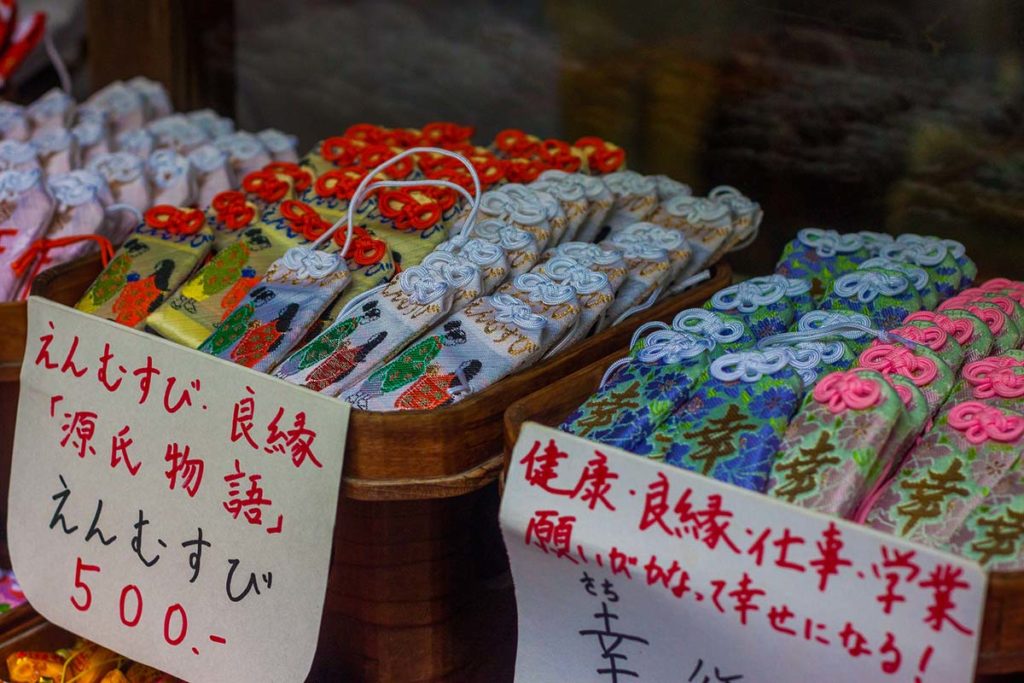
Matcha Tea
Japan loves tea almost as much as the English and bringing some back home with you will allow you to extend the feeling of being in Japan throughout the year. Matcha or macha tea is the most popular variety in Japan. It is made from finely ground green tea leaves, and the powder version is dissolved into boiling water instead of steeped inside a tea bag. You’ll often find this kind of tea free of charge at your table in various restaurants as a compliment to the entire meal.
Some of the best, fresh matcha can be found at local food markets, sold in beautifully decorated tins that make them perfect for gift giving. If you’re looking for something a little simpler, you can also find tea at any supermarket! I love exploring foreign grocery stores and the tea selection in Japan is stellar! Just give anything you think looks good a try, you won’t be disappointed.
Capsule Toys
Gachapon refers to the little vending machine which dispenses capsule toys. The word ‘Gachapon ‘is onomatopoeia for the sound the crank makes when you use the machine. These devices each contain different sets of toys, and you never know which item from the set you’re going to receive. It’s totally random. Most sets include some rare items which become sought-after collector treasures. The toys set change pretty often, so there’s always something new to buy.
We found little plastic cats were sitting on rice cookers, tiny replicas of vintage buckets, Pokemon shaped cookies and lots of Japanese characters often themed the various holidays. These make for small, cheap souvenirs to bring home for friends and family as they are wonderfully weird and always unexpected.

Purikura
In the basement of any arcade, you’ll find dozens of Purikura photo cubicles, each one from a different company offering a unique experience. Purikura machines are where you can get those classic Japanese printed photos where you can add text, stickers and give your face the “anime” treatment. The Purikura experience costs 500 yen ($5 US). Unlike photo booths you find in North America, where you step in and just take your picture, these use a green screen. The camera moves around, so you get a bunch of different options from portrait mode to full body and even sometimes animated GIFs.
Once you finish your photo shoot, you’ll be directed into another booth where you’ll get to decorate, alter, add filters and text to all the photos you took. Afterwards, your photos will be arranged into a collage (often picked by you) and printed out at the same station where you initially put your coins inside. It was great fun trying out different poses and spending as much time as we were allowed decorating the photos into something absolutely ridiculous. These are some of the best mementos of are trip so don’t hesitate to make one anytime you see a Purikura machine!


Sports Souvenirs
Japan LOVES a merchandising opportunity. And one of their most popular assets is sports merchandise. Japan has a fan base for their sports teams like no other. During baseball games, they have entire sections of the stadium dedicated to the cheerleaders who have a special theme song they sing for each and every player. When attending a sporting event, don’t skip visiting their retail shop. And there is always more than one! Each featuring a different selection of products. From towels to jerseys and more, there is literally something representing each player in any form you might dream of. My husband is a huge wrestling fan, and we were lucky enough to get to see a live show while we were there that also had a plethora of awesome swag to pick up after the event.

Daruma Dolls
These adorable little round characters are called ‘daruma‘ dolls. Daruma dolls are fearsome-looking men who symbolize good fortune. When you buy these dolls, their eyes are blank and it is your job to fill them in. When you come up with a goal, you fill in one of the eyes as you set your intention and the daruma will bless that goal with good fortune. Then once the goals have been achieved, you fill in the other eye and display the daruma, a way of thanking him for his blessing. A great place to find Daruma dolls is in Asakusa along the traditional shopping street Nakamise. Here you’ll find traditional souvenirs shops selling darumas in various sizes. The bigger the daruma, the bigger the blessing.
Tax-Free Advice
If you are a foreign traveller, you have the chance to buy many your souvenirs tax-free! Consumption tax in Japan is 10%, although some products like food have a reduced rate of 8%. Still, saving 8-10% is a huge deal especially if you’re on a budget so you don’t wanna miss the opportunity to do so. While getting your tax-free refund isn’t a piece of cake, its easier than you might imagine and totally worth the effort. Most stores will have large, clearly displayed signs in English which say “TAX-FREE available“. If there are no signs, just inquire with a staff member.
To qualify for a tax-free rebate, the total purchase amount of wares bought in the same shop, on the same day, must be at least 5,000 yen or more (but must not exceed 600,000 yen). These purchases must be for individual consumption and must not be sold in your home country or used for business purposes.
Types of Tax-Free Items
There are two main categories of tax-free items; general goods and consumables. An example of general goods is; clothes, shoes, toys, electronics, jewellery. Consumable goods are things like, food, drink, beauty products and cosmetics. Each category must exceed 5,000 yen to be tax-free as the two categories cannot be combined to reach the total amount. Consumable goods are also placed in a sealed bag once purchased tax-free and the bag cannot be opened until you reach your final home country. So you can’t buy $100 worth of KitKats and just eat them in your hotel in Japan if you bought them tax-free.
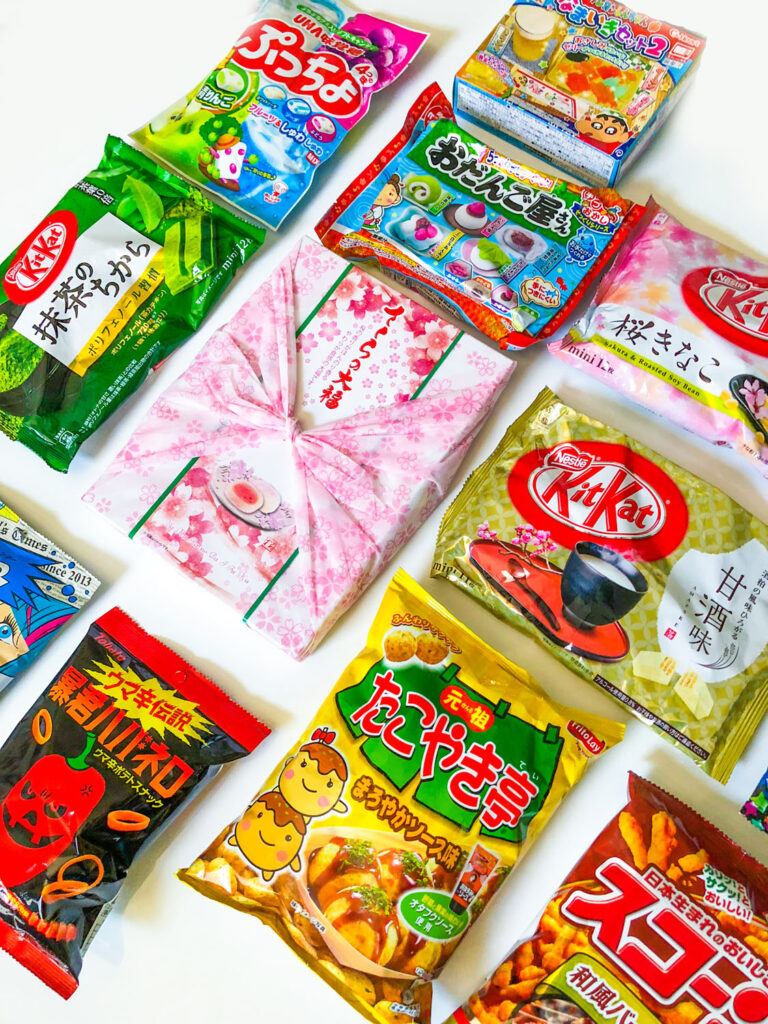
Here are the steps in getting your tax-free refund:
- Find the tax-free counter in the store. If you can’t find one, or they don’t have a dedicated counter, just as a staff member for help.
- Bring your passport! You’ll be asked to present your passport to prove your country of residence at the counter. Paper or digital copies of your passport will not be accepted!
- A record of purchase will be printed and stapled inside of your passport, so don’t be put off if they take it away to do this – its totally normal. If they don’t, be sure to ask for the record of purchase and keep it with you. Do not remove it from your passport as this is required at the airport.
- Sign the purchaser’s pledge which affirms you do not live in Japan and are taking the items out of the country within 30 days.
- Consumables are placed inside a plastic bag that cannot be opened until in your home country. General goods can be worn or used while in Japan but must be brought back home with you.
- When you arrive at the airport, you present your passport with the record of purchase to the customers’ officer.
- Once you arrive at home you are free to enjoy all your goodies and share with family and friends!

Have you been to Japan? What was your favourite souvenir you brought home with you?! Let me know in the comments.
Happy Travels Adventurers
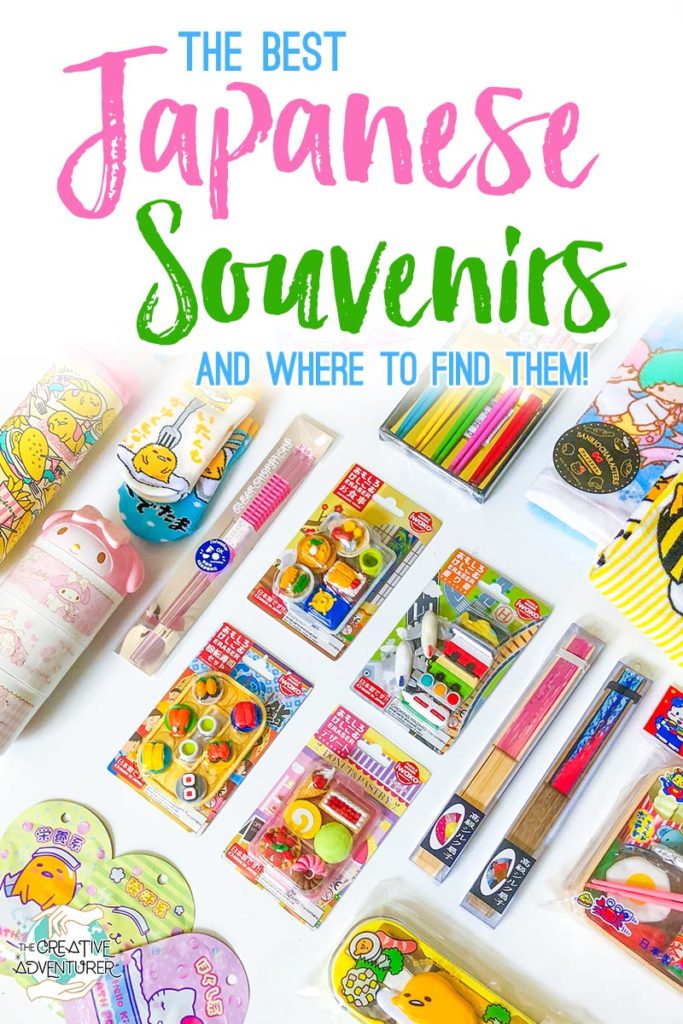
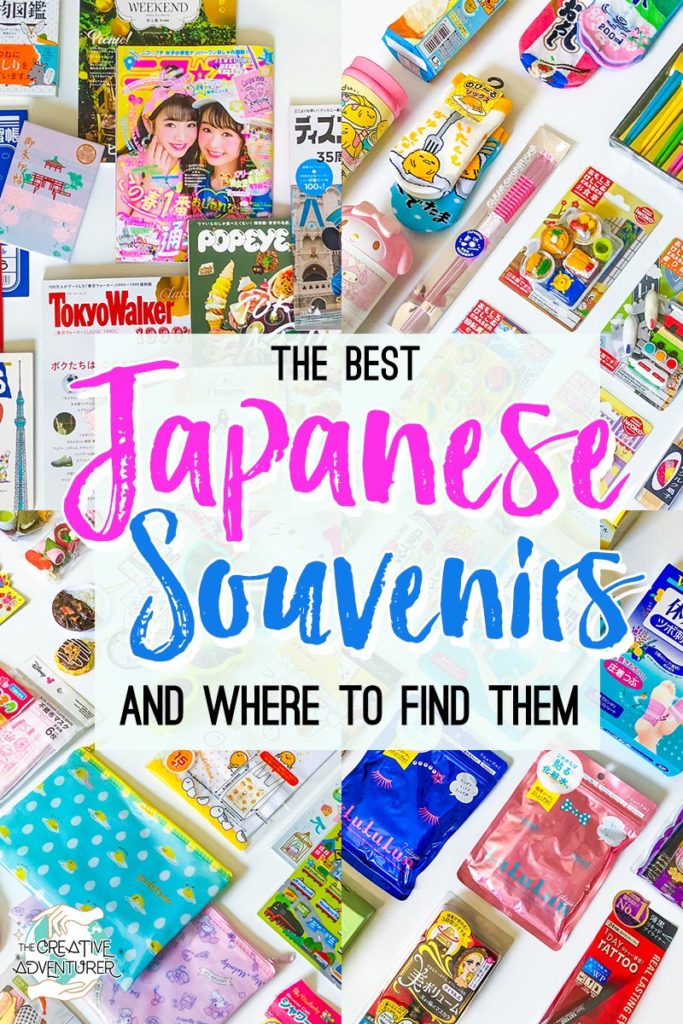
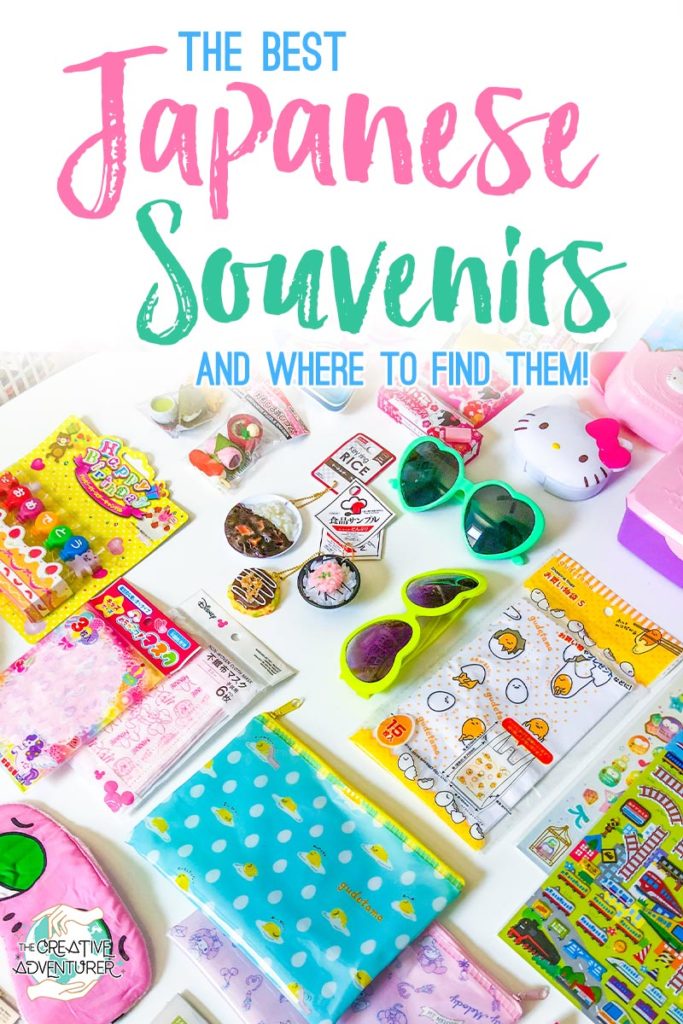


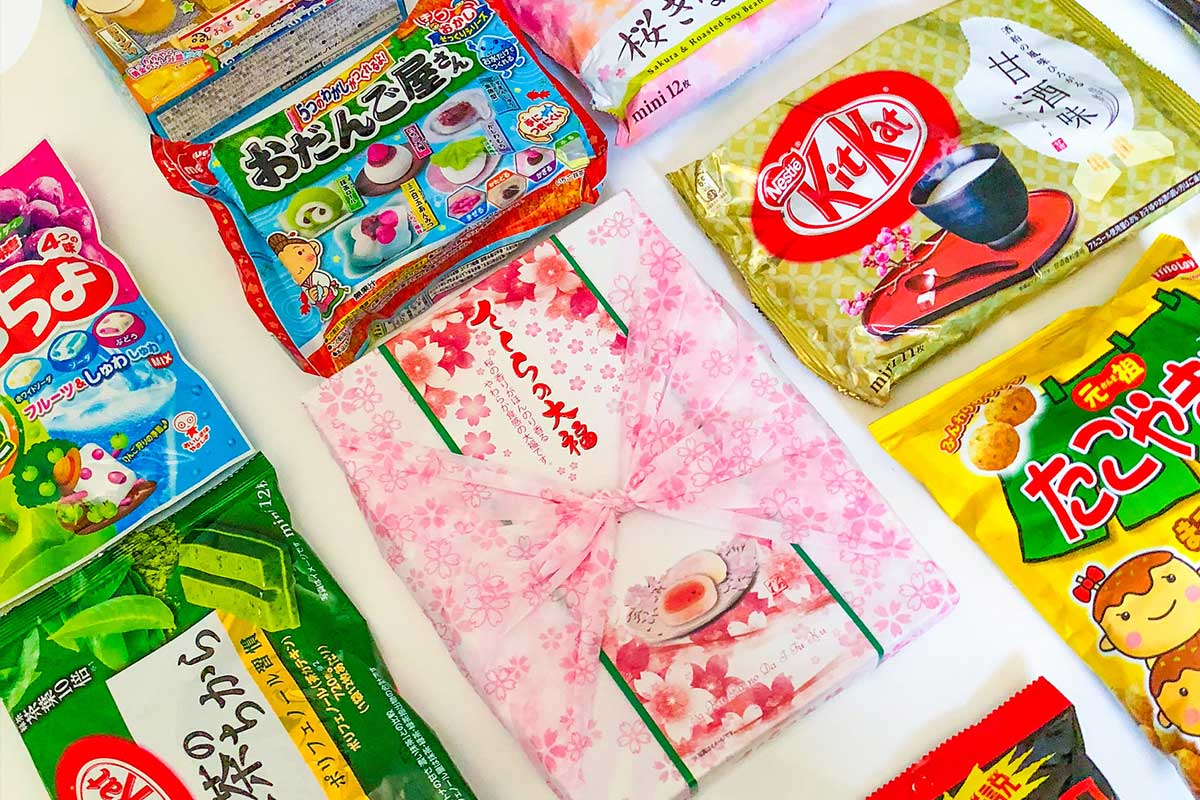
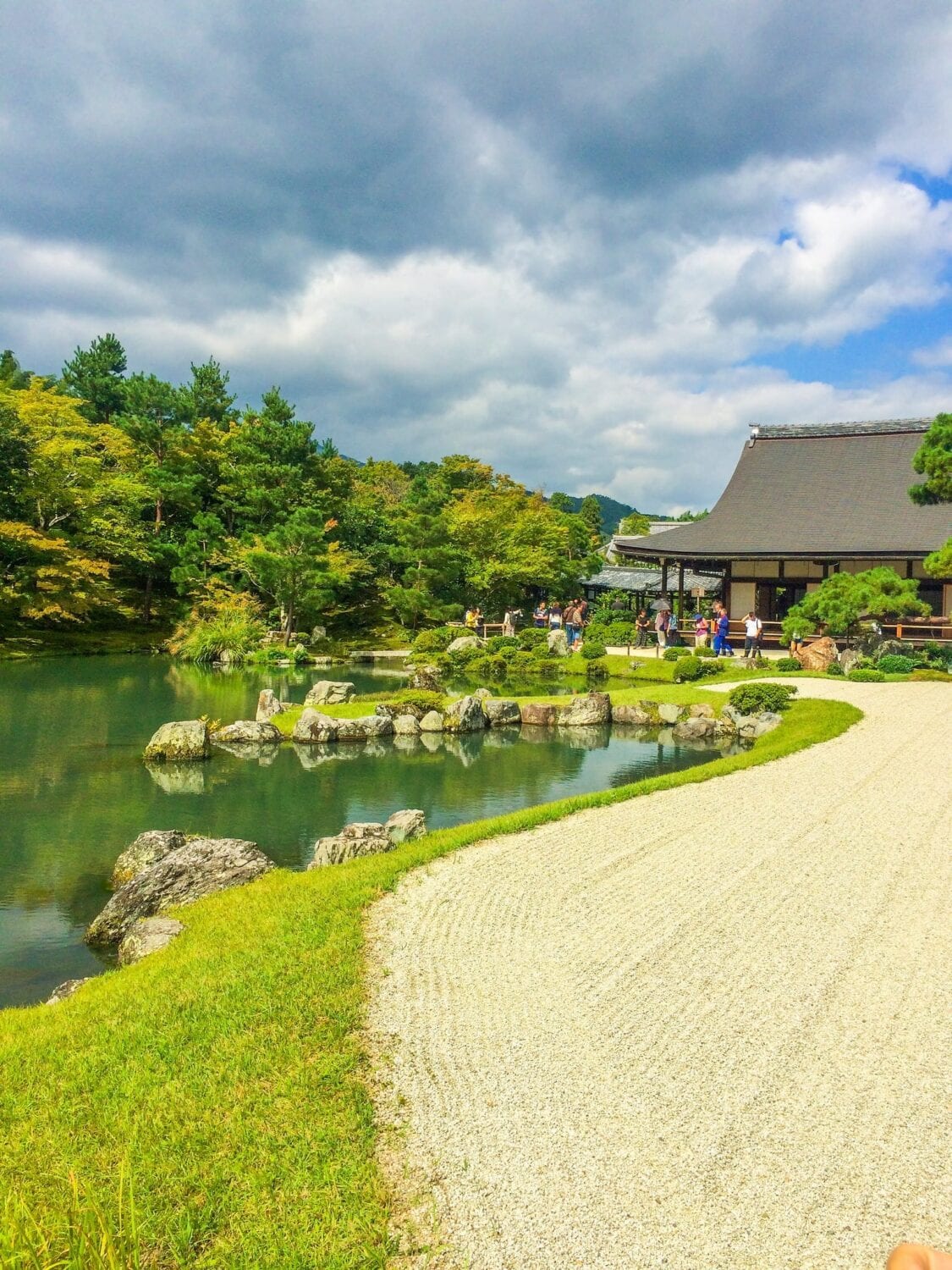
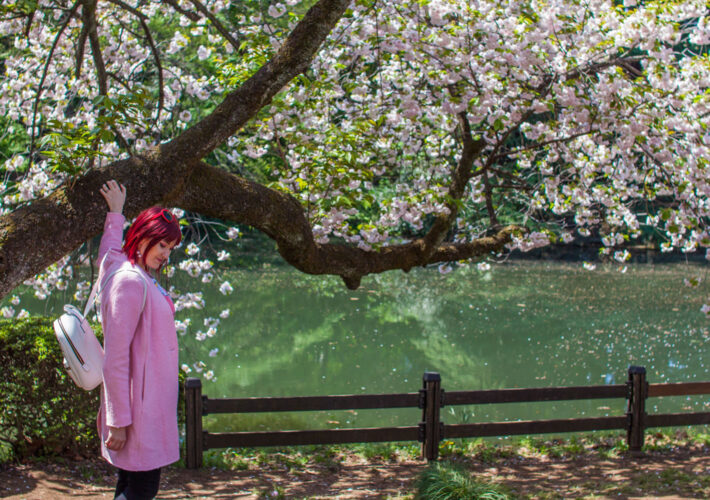
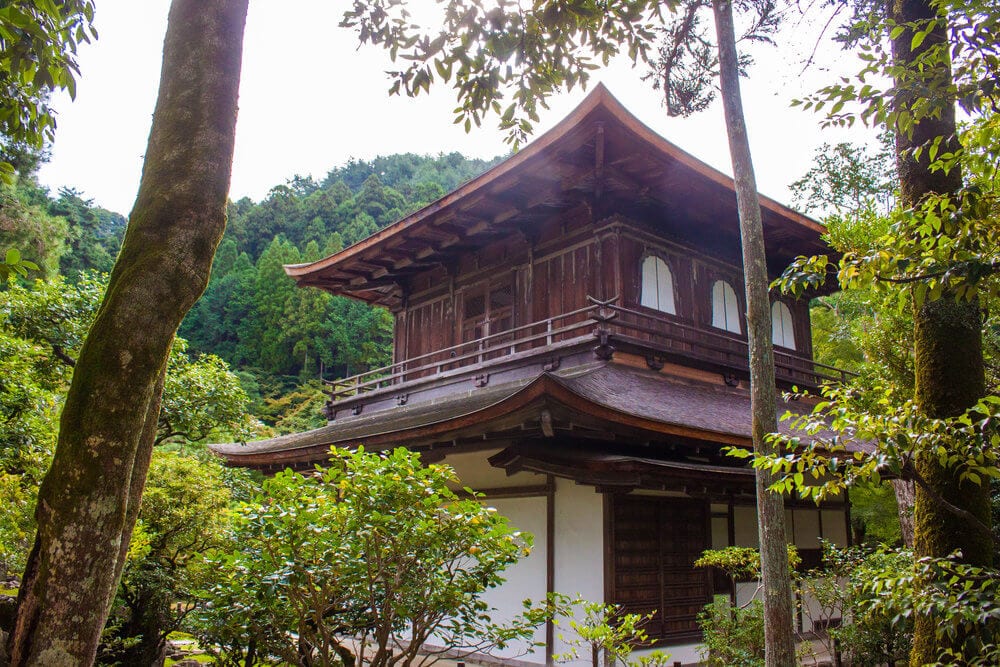
Leave a Comment